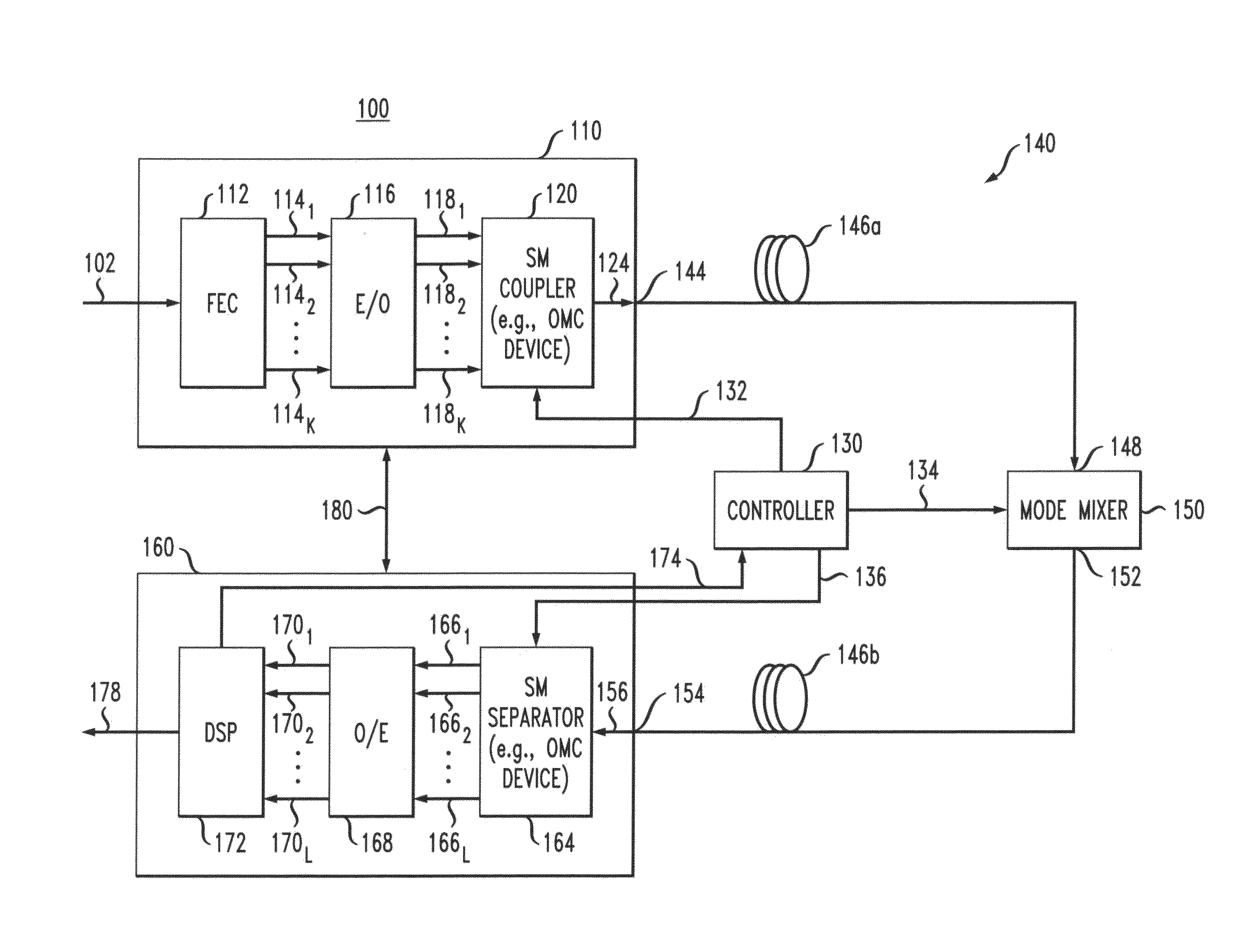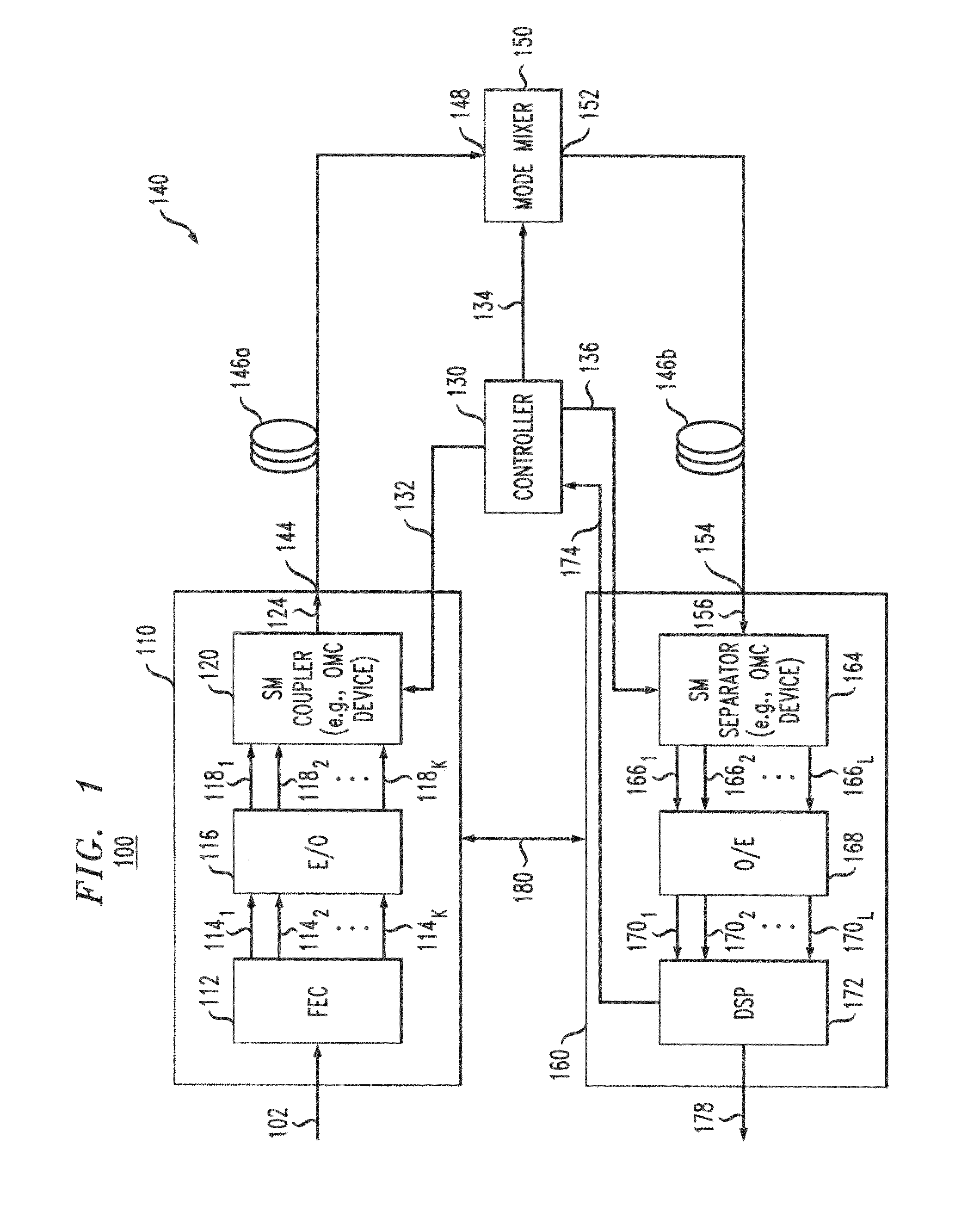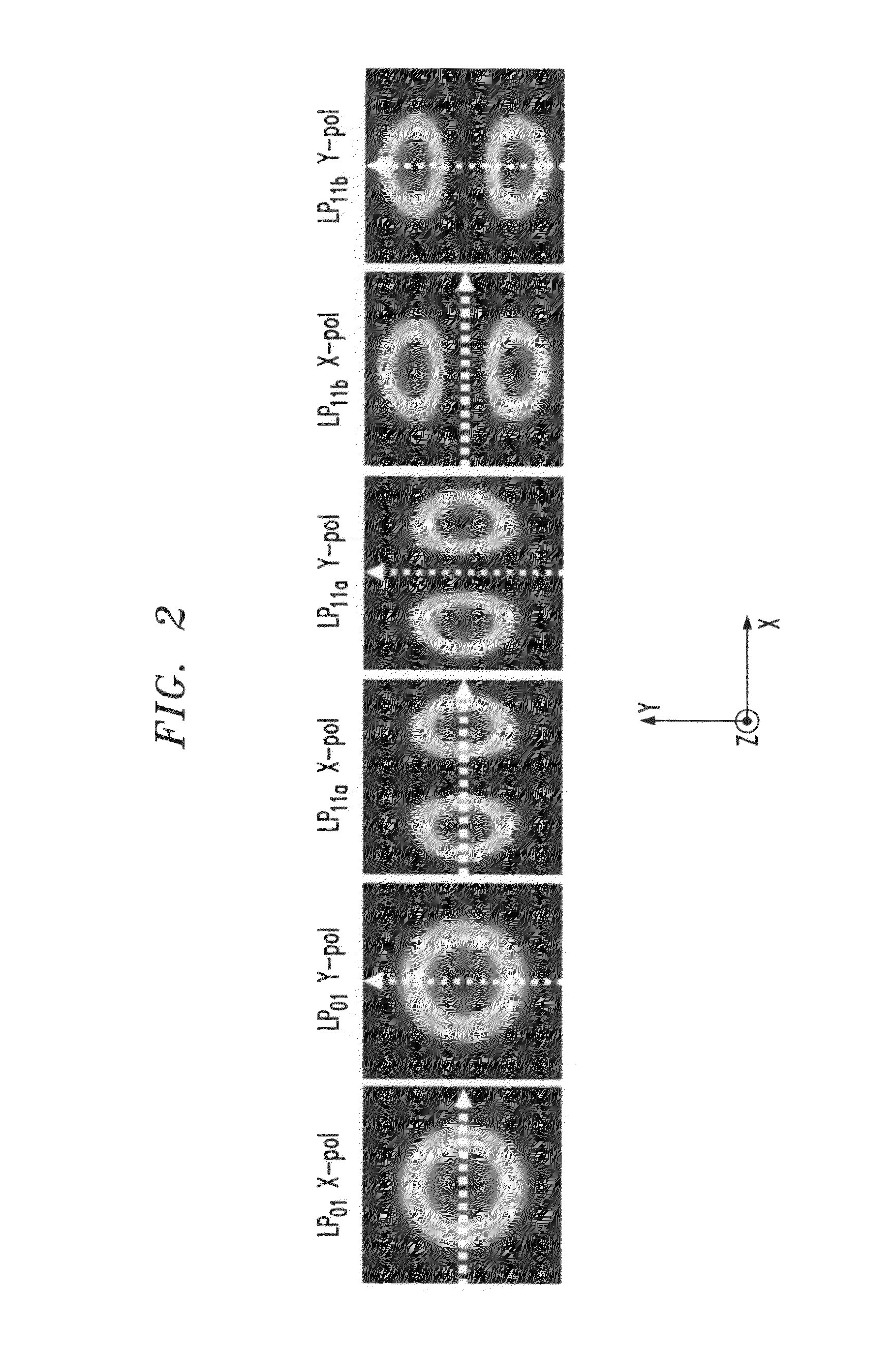Intra-link spatial-mode mixing in an under-addressed optical MIMO system
a spatial-mode mixing and optical mimo technology, applied in the field of optical communication equipment, can solve the problems of not being able to simultaneously couple corresponding modulated optical signals, and not being able to individually address all the supported spatial modes of a typical multi-mode or multi-core. , to achieve the effect of reducing the probability of outage in an under-addressed optical
- Summary
- Abstract
- Description
- Claims
- Application Information
AI Technical Summary
Benefits of technology
Problems solved by technology
Method used
Image
Examples
Embodiment Construction
[0044]A multimode fiber can provide a higher transmission capacity than a single-mode fiber, e.g., by means of space-division multiplexing (SDM). More specifically, different guided modes of a multimode fiber can be populated with different modulated optical signals or different linear combinations of a given set of independently modulated optical signals. The original data can then be recovered at the receiver by appropriately de-multiplexing and de-convolving the resulting received optical SDM signal. A similar concept is also applicable to a multi-core fiber. Advantageously, space-division multiplexing can be used to complement other multiplexing techniques, such as time-division multiplexing, wavelength-division multiplexing, orthogonal frequency-division multiplexing, and polarization-division multiplexing, thereby further increasing the accessible transmission capacity of the corresponding optical-transport link.
[0045]As known in the art, a multimode fiber may subject the opti...
PUM
 Login to View More
Login to View More Abstract
Description
Claims
Application Information
 Login to View More
Login to View More - R&D
- Intellectual Property
- Life Sciences
- Materials
- Tech Scout
- Unparalleled Data Quality
- Higher Quality Content
- 60% Fewer Hallucinations
Browse by: Latest US Patents, China's latest patents, Technical Efficacy Thesaurus, Application Domain, Technology Topic, Popular Technical Reports.
© 2025 PatSnap. All rights reserved.Legal|Privacy policy|Modern Slavery Act Transparency Statement|Sitemap|About US| Contact US: help@patsnap.com



